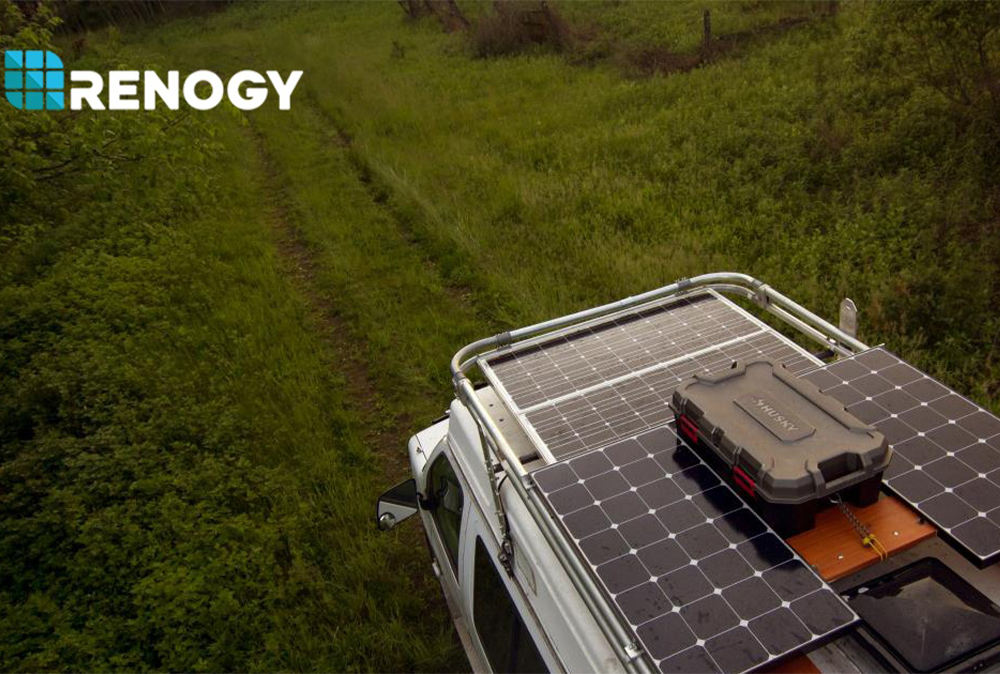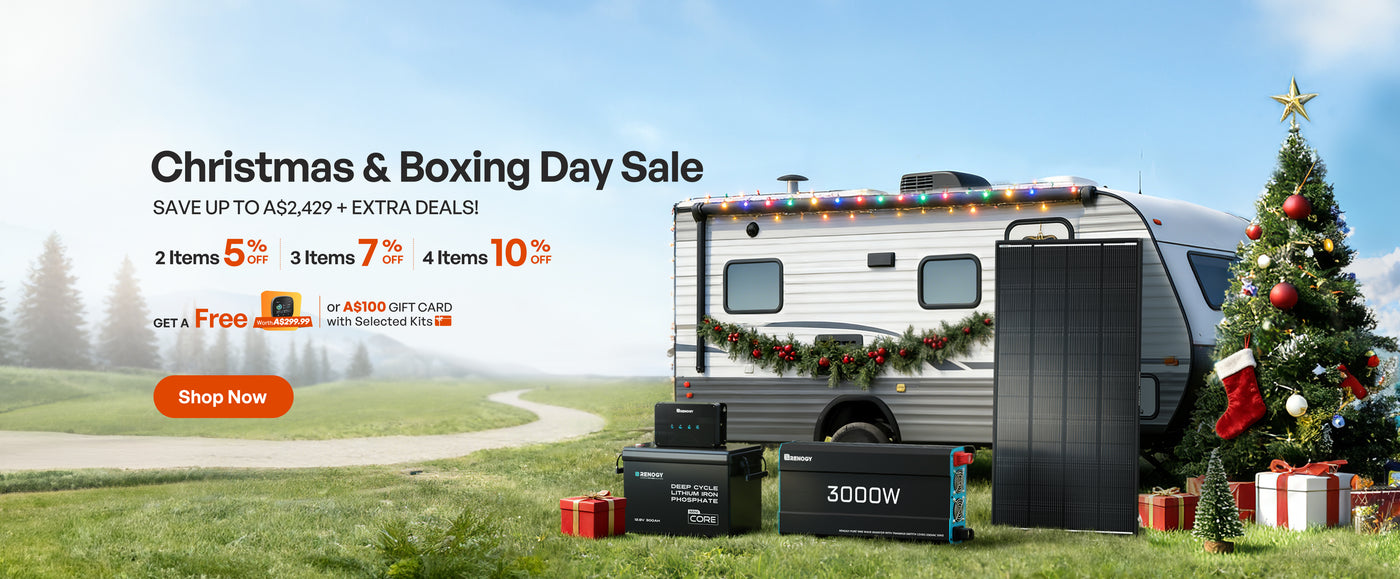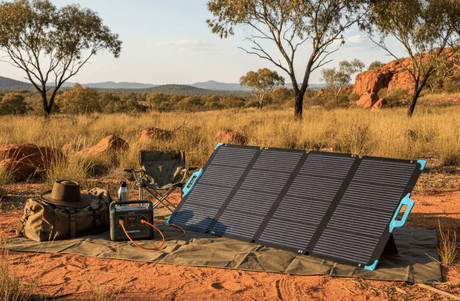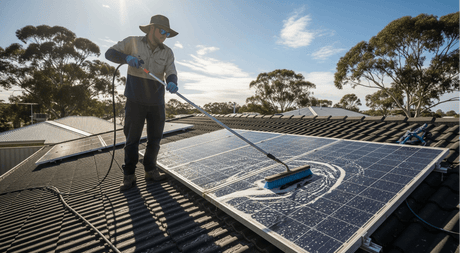Whether you’re looking to live off the grid, save the environment, or just save some money on your power in the long term,solar panel kits are the way to go. However, an awful lot of decision-making goes into designing and implementing any solar power system.
While the team at Renogy can provide for all of your solar needs, it’s best that you develop an understanding of the various solar system components and what exactly it is that you need for the best performance.
What Are the Main Components of Any Solar System?
While there are many different solar power applications, any solar power system will have the same set of general components. In particular, these are the kinds of systems you would install on your home, cabin, or other property. There are plenty of other options available for vehicles and niche applications that might have slightly different requirements.
It’s important to keep quality in mind when picking out components of all kinds. You need to find parts that are reliable, durable, efficient and effective. There’s no point in putting up your solar power system if you can’t count on it, so always make the right choice and know your products before making your choice.
Solar Panels
Of course, the most important part of generating solar electricity is going to be your true-bluesolar panels. Photovoltaic solar panels take in sunlight and pump out DC power, generating electricity in an economically and environmentally sound way. Each panel is made up of many solar cells, usually between 60 and 144.
Large panels have more area to absorb more sunlight, creating more electricity. Individual panels generally range as little as 80 watts to well over 300 watts. Here in Australia, most homes would need about 6,000 watts of electricity supply to get by, but there are many individual factors that go into choosing the right number of panels in order to power your home with enough capacity.
The placement of your solar arrays is going to have a big impact on just how effective they are. In Australia, your solar panels should face north to get the highest amount of sun exposure possible. Generally speaking, a tilt of 30 degrees produces the best solar energy system output.
Keep in mind that when getting your solar panel systems designed, there are two primary types of panels: polycrystalline and monocrystalline. Monocrystalline panels are made up of a single large crystal that delivers higher light absorption. However, both types have greatly improved, and the difference in quality between individual brands will be a more significant factor in how cost-effective your system is.
Charge Controllers
The panels themselves are far from the only solar system components, with many other parts coming into the mix. Among these components is the charge controller, which manages electricity flowing from the solar panels to the rest of the system. These devices ensure that your solar batteries aren’t overcharged, which can drastically reduce their lifespan.
You have two primary options forcharge controllers, maximum power point tracking (MPPT) and pulse width modulation (PWM). These change how your solar power system handles generated power and distributes it to your batteries.
If you go with a PWM charge controller, you need to ensure that the voltage on both the panels and the solar batteries match. Systems must be designed this way when PWM charge controllers are used due to the minimal control exerted over the flow of electricity.
MPPT charge controllers, on the other hand, provide greater flexibility in the voltage difference between panels and batteries. These more-involved charge controllers enable solar electric systems to make better use of their peak production, and chances are MPPT is going to be the best choice to make for your solar power system.
Inverters
The electricity that comes into your home is alternating current power or AC power. Any power supplied to your home’s electrical system has to be AC power, but photovoltaic solar panels put out direct current or DC power. This means that the power must be converted to be usable, and that’s done using an inverter.
An off-grid solar energy system will rely on a battery-based inverter and can make all of your solar system components work together better.
Grid-tied systems require inverters that synchronize the output voltage and frequency to the main power supply. Getting the right size inverter is critical, as it will have to handle the peak system load. The voltage of the inverter and the battery bank also need to match.
Some people like to get oversized inverters in order to save money on future expenses when they ultimately need to add panels to their system. These people also hope to balance out low production with “lost production” to make better use of the inverter’s capacity and produce more power overall.
String inverters connect to all of the panels in the system at once, which means that you only need one of them. However, because they’re all connected, the inverter only allows the panels to operate at the efficiency of the worst-performing panel in the array. A combiner box can connect multiple strings ahead of the inverter to run even more panels off of a single inverter.
The alternative solution is microinverters, which are independent for each panel. That means you’re going to need more of them, which will cost more upfront. However, it allows each panel to work at its own maximum efficiency. They’re also generally considered safer because there is less wiring transferring DC power.
Racks and Mounts
You might not have considered the mounting system part of the solar system components, but it’s just as essential as any other part. There are many different options for racking, and a lot of that is going to come down to where exactly you’re installing your solar panels.
Many solar panels are mounted on roofs. They have a generally unobstructed view of the sun, they’re out of the way for most kinds of damage, and you weren’t using that space for much else anyway. When it comes to roof mounting, the most important thing to look for is quality.
The quality of different mounting brands can vary widely, and you never want to take a risk on subpar materials and construction when it comes to your roof. Low-quality racking can fail unexpectedly, potentially leading to irreparable damage to your solar panels. It could also cause severe damage to your roof, leading to major repair costs.
The same goes for the installation of your solar panels. You should always use professional installers to ensure both the safety of your solar panels and your roof. You don’t want an amateur trying to mount solar panels to your roof, as they could leave you with leaks and other damage.
A ground mount is another potential option. The main drawback here is that they’re going to take up space in your yard or somewhere on your property. Another issue is that they are likely to be obstructed by objects like trees when low to the ground. That means they’ll require a lot of clearance that you might just not have. Being at ground level also opens the door to damage from accidents of all kinds.
Pole-mounted solar panels could work when roof mounting isn’t a viable option. This provides the additional height required to have an unobstructed line of sight with the sun, protecting them from ground-level hazards. While most people just stick with roof mounting, your individual situation will play a big part in your decision.
Solar Batteries
Because solar panels can only put out electricity the very same moment they’re getting sunlight, their output is very erratic over the short term. They can’t provide electricity at night, and cloud cover can drastically cut production down to about zero. Batteries are used as essential solar system components to provide a steady power supply.
When choosing your system, this is one component to pay careful attention to because they make up a considerable portion of the total system cost. These large batteries will be one of two types: AGM batteries or lithium.
AGM batteries are a major upgrade over the technology that goes into conventional car batteries. They still rely on the chemistry of sulfuric acid and lead to store and release power, but they incorporate new technology that makes them more effective, more reliable, and safer.
AGM stands for “absorbed glass mat” and refers to fiberglass mats between the plates inside the battery. This prevents the buildup and release of hydrogen gas from the chemistry inside, which has been a source of both danger and inefficiency in conventional batteries.
AGM batteries are a versatile option that provides great capacity at reasonable prices today. Compared to older lead-acid batteries, AGM batteries let solar energy systems take advantage of all their benefits without the safety and maintenance concerns.
Lithium batteries are a step up from AGM batteries but are often prohibitively expensive as solar system components. Their chemistry is very safe and delivers a higher number of charging cycles, meaning a longer life. They’re also smaller and lighter when delivering the same capacity, making them more convenient. The big sticking point here is purely the price.
Backup Power for Your Solar Power System
Your batteries provide the necessary capacity in order to provide power during the night when your solar panels aren’t producing any electricity, essentially serving as a buffer. However, they aren’t going to keep your home running for days on end if your solar panels or other solar system components fail. So you have to think about what you can do for backup power.
The simplest option is to go with a grid-tied system. This means your home is still connected to the main power grid, so if your solar panels break down, you simply purchase electricity from the electric company like any other home.
However, this might not be an option if you’re installing your solar power system in a remote location or if you just don’t care to connect to the grid. In that case, there are plenty of other backup options.
A standby diesel generator is a reliable source of backup power, which is why these are widely used in industries that can’t afford any electrical downtime at all. Of course, many people who choose electrical panels do so for environmental benefits. In that case, you might consider a small wind turbine for auxiliary power.
For emergencies, however, it would be best to have at least a portable generator available to provide the bare necessities if your solar system components or other backup power systems should fail.
Maintaining Your Solar Power System
After putting so much time, money, and effort into designing and installing your solar system components, it’d be a waste to let a lack ofsolar panels maintenance see them fall into disrepair. Luckily, there are just a few simple steps to follow to keep your system up and running.
Rainfall will naturally clean off solar panels, but that can be a problem during the dry season. If there hasn’t been rain for some time, you can just spray them down with a hose to have them as good as new.
Cleaning them is really about the most important thing to do. Like any other electrical component, it’s best to have semi-regular inspections from professional electricians to catch any issues ahead of time. Doing so can save you a lot of money in the long run and help you get the most out of your solar power system.
Summing It Up
It’s clear that a lot goes into choosing the right solar system components for your individual needs. You’ll have to consider your power requirements, the unique challenges of your property, and the right balance between price and additional figures. Renogy can provide you with all of the panels, inverters, batteries, and other components you need in order to implement and maintain your ownDIY solar power system.







![What Is a DC to DC Battery Charger [Comprehensive Guide]](http://au.renogy.com/cdn/shop/articles/IMG_3829_bd86de74-31d6-49fd-b9d5-265bb723091d.jpg?v=1757582605&width=460)


